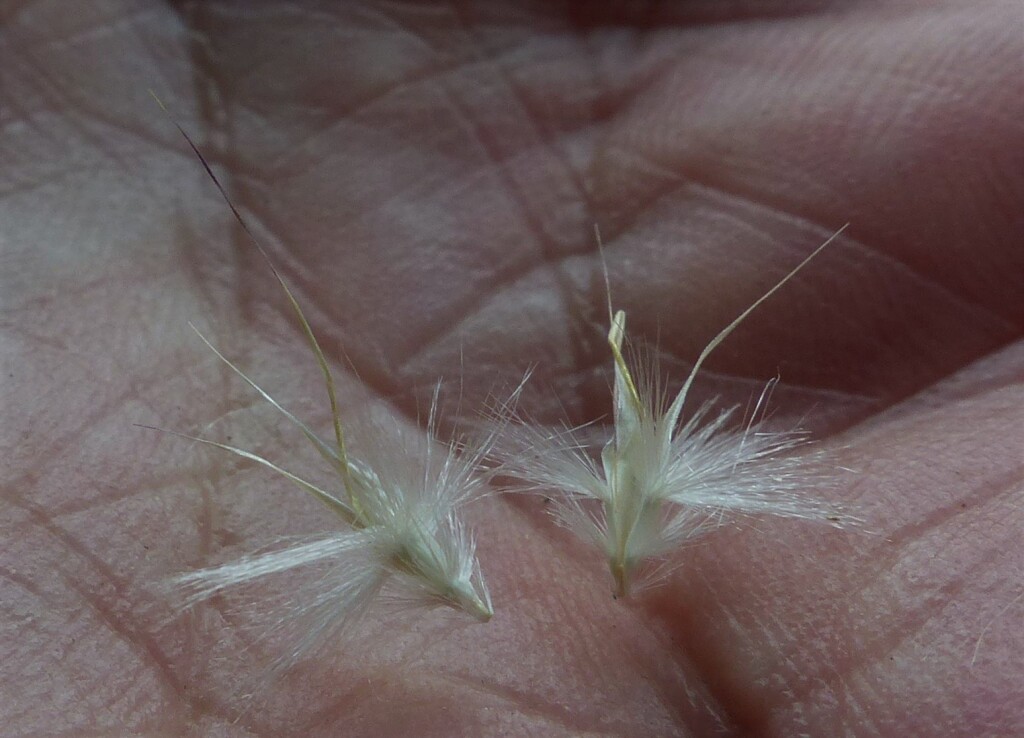Rytidosperma auriculatum
(J.M.Black) Connor & Edgar Lobed Wallaby-grassSlender tufted perennial. Culms to 50 cm high. Leaves pilose-hairy; blade mostly fine, inrolled to (rarely) flat, to 15 cm long and 1(–2) mm wide. Panicle ovate, compact or occasionally sparse with few spikelets and appearing race-mose, mostly 2–4 cm long. Spikelets not or only slightly purplish, mostly 4–6-flowered; glumes subequal, acute, 9–16 mm long; lemma rather broad, 3–4 mm long, with 2 rows of hairs, the lower c. 1.5 mm above the callus hair-tuft; lateral lobes slightly divergent, c. 9–12 mm long, firm, acuminate, the outer margin thinner-textured and terminating in a triangular wing of variable size and relative position (usually near the base but occasionally nearer the setiform part of the lobe); central awn exceeding lateral lobes by 1–5 mm; palea obovate, obtuse, exceeding the sinus by up to 1.5 mm, the margin densely short-ciliate. Flowers Sep.–Dec.
MuM, Wim, VVP, VRiv, MuF, GipP, OtP, Gold, CVU, GGr, DunT, NIS, EGU, HSF, HNF, MonT, VAlp. SA, NSW, ACT. Locally common on the more fertile soils of the lowlands mostly in the north and near-west of the State, but with scattered occurrences mostly on poorer rocky soils in the east.
Although in the typical form the lemmas of Rytidosperma auriculatum are among the most unmistakable of the genus, extreme reduction of the critical feature, i.e. the marginal wing on the lateral lobes of the lemma, can render this species virtually indistinguishable from the more widespread R. erianthum. The two species are vegetatively similar and occasionally occur together. Detailed studies may show R. auriculatum to be better recognized at a subspecific level within R. erianthum.
Walsh, N.G. (1994). Poaceae. In: Walsh, N.G.; Entwisle, T.J., Flora of Victoria Vol. 2, Ferns and Allied Plants, Conifers and Monocotyledons, pp. 356–627. Inkata Press, Melbourne.
 Spinning
Spinning


